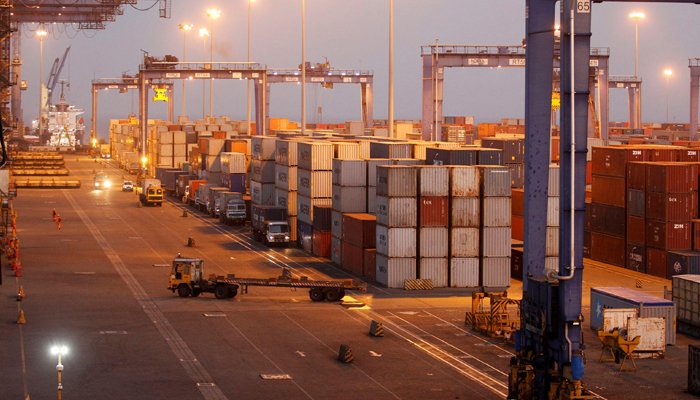Current account deficit climbs to $9.1b in first half of FY2022
Current account deficit amounts to 5.7% of GDP, while calendar-year deficit in 2021 was $12.2 billion
January 23, 2022

- Pakistan's current account deficit amounts to 5.7% of GDP, while calendar-year deficit in 2021 was $12.2 billion.
- Pakistan Bureau of Statistics data shows trade deficit increased to $25.5 billion in July-December FY2022.
- Current account's performance deteriorates as imports vastly outpace exports.
KARACHI: Pakistan's current account deficit climbed to $9.1 billion in the first half of this fiscal year, as compared to a $1.2 billion surplus in the same period last year, according to the central bank's data released on Saturday, The News reported, primarily citing a widening trade gap as a reason for the climb.
The current account deficit amounted to 5.7% of the gross domestic product (GDP).
In 2021, the calendar-year deficit was $12.2 billion, compared to a $245 million surplus the previous year.
Data from the Pakistan Bureau of Statistics (PBS) showed that one of the major components of the current account, the trade deficit, increased 106% to $25.5 billion in July-December FY2022.
The current account's performance has deteriorated in the last six months as imports have vastly outpaced exports.
The growth in imports accelerated faster than exports amid domestic economic recovery from the COVID-19 pandemic and higher global commodity prices.
Imports of goods rose 57 percent to $36.4 billion in July-December FY2022, the State Bank of Pakistan’s (SBP) numbers showed. Exports increased 29 percent to $15.2 billion.
“The current account deficit was broadly unchanged at $1.93 billion in December from $1.89 billion in November,” the SBP said in its official Twitter handle.
December's current account shortfall was slightly lower than analysts’ expectations. However, a gap between the SBP and PBS trade numbers remains. The imports figure given by the SBP clocked in at $6.5 billion in December, which was much lower than PBS import numbers of $7.6 billion, said Topline Research in a note to clients.
The deficit sharply widened 207 percent year-on-year in December. It came at $629 million in the corresponding month of FY2021. The main reason behind the YoY deficit was a 31 percent rise in imports to $6.5 billion.
However, total exports also increased 30 percent to $2.92 billion with remittances from overseas Pakistani workers rising 3 percent to $2.52 billion.
The country’s current account deficit, which topped $18.9 billion in 2018, has again been worrying investors and markets after rupee depreciated 10 percent so far this fiscal year amid depleting foreign exchange reserves.
The SBP expects a deficit of 4 percent of GDP this fiscal year, while analysts forecast the deficit to be 5 percent of GDP or $16.8 billion. However, the projected current account deficit raises the question how it’s going to be funded.
Pakistan debt repayment for FY2022 stands at $14.3 billion (including China’s safe deposit of $4 billion). The country has to repay a foreign loan of $8.6 billion in the second half of FY2022.
The government is confident of easing macroeconomic concerns and improving performance of the current account after the potential resumption of the IMF (International Monetary Fund) loan programme soon.
The revival of the IMF bailout is expected to unlock financing from other international financial institutions. The government is also going to issue a seven-year dollar denominated sukuk in the international debt markets.
“Supply chain disruptions caused by pandemic will wind down, and most central banks will end their ultra-accommodative stance in 2022. This means that commodity prices will average lower from current levels as we move forward in the year, and current account deficit and inflation will be better in 2H2022,” said an analyst at Alfalah Securities in a report.











